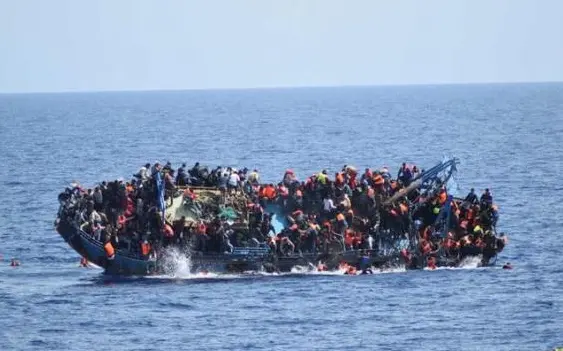After a flurry of boat departures that sent hundreds of migrants to their deaths in the Mediterranean, survivors told police they had been kept for weeks on one meal a day in holding houses near the Libyan shore.
Then they boarded the rubber or wooden vessels, but only those co-opted to run or drive the boats were given life-jackets, according to accounts given to Italian police.
As calmer summer weather begins, European officials who struck a deal with Turkey to block crossings to Greece have been scrambling for ways to shut down flows on the other major sea route into the EU from Libya.
They hope a U.N.-sponsored government that arrived in Tripoli in March will bring stability, and the EU last week agreed to help to train Libya's coastguard.
But Libyan officials describe themselves as under-resourced and helpless against powerful smugglers who go about their trade with impunity, adapting swiftly to new conditions.
At least 880 migrants and refugees died trying to cross the Mediterranean last week, the U.N. refugee agency said. The route between North Africa and Italy was "dramatically more dangerous" than the one to Greece, it said, with the chance of perishing estimated at one in 23.
The new government faces a complex challenge asserting its authority, while efforts to counter people trafficking were thrown into disarray by the conflict that followed Libya's 2011 uprising, and the coastguard feels abandoned.
"The only assistance we have been offered so far is promises," said Colonel Abdulssmad Massoud of the coastguard in Tripoli.
Italy says arrivals so far in 2016 are down two percent on last year at about 40,000 landings, mostly of people from African countries like Nigeria, Eritrea, Gambia and Somalia. There is little sign of a return of Syrian refugees, tens of thousands of whom were traveling through Libya until they switched to the Turkey-Greece crossing in 2015.
Instead, smugglers enriched by those Middle Eastern migrants are again working long-established routes across thousands of kilometers of hostile desert between sub-Saharan Africa and western Libya.
As migrants pass through Libya, they enter a system marked by abuse, corruption and a near-complete vacuum of state authority.
(RUERTERS)
 简体中文
简体中文

